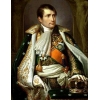|
 The Center of Napoleon Treasure Hunt opened and based in
Moscow announced on the start-up of the digging works in summer 2010 aimed to
discover the legendary treasure dispatched from the robbed Moscow by the
defeated army of the great Napoleon. The diggings will end up in the year 2012
and nobody knows whether they will be fruitful since it’s about two hundred
years since Napoleon’s Treasure has been hunted for by many groups of diggers
and hunters from all over the world. The Center of Napoleon Treasure Hunt opened and based in
Moscow announced on the start-up of the digging works in summer 2010 aimed to
discover the legendary treasure dispatched from the robbed Moscow by the
defeated army of the great Napoleon. The diggings will end up in the year 2012
and nobody knows whether they will be fruitful since it’s about two hundred
years since Napoleon’s Treasure has been hunted for by many groups of diggers
and hunters from all over the world.
In the
autumn 1812 Napoleonic army invaded Moscow
city with the triumph and the city was wholly robbed and plundered. The looters
did not give up taking away valuable items from private houses and churches.
They robbed the Kremlin, the place that was quite reputed place to rob. The
plunders took away thousands of golden coins, icon framings, and gold and
silver bars and even the cross from the great Ivan the Great bell tower. Soon
after the invaders found out they would not get better in Moscow
any longer they eventually arranged to escape from Russia.
By some
particular sources every soldier of the Napoleonic army had around ten kg of
jewelry on him while escaping along the Smolensk Road. There were two hundred
carts equipped with the Emperor’s loot. However, the French army was not ready
enough for the Russian frosts and they terribly suffered from frost, hunger and
partisan actions. So, they were forced to hide the plunder putting high hopes
to come back again for the treasure. As different sources state, the captured
cart of Napoleon was either buried or sunk. And since then gold hunters have spent
time and money to dig out what was plundered.
The hunting
for the Napoleonic treasure was initiated in the 19th century. Thus, in 1835 a many-volumed work
«Life of Napoléon Bonaparte» by Walter Scott was released in France. In
his book Walter Scott depicted the events when the plunder from Moscow city was
thrown to sikn and into the Semlev Lake that is in Smolensk region. Nikolay
Khmelnitskiy who was the governor in Smolensk city flashed with the incredible
idea to dig the treasure. Nevertheless, the diggings were not successful in
regards to jewelry and treasure. The explorers still affirm that hunting for
the Napoleonic treasure was initially loosing.
The Ugra River banks
situated in the Smolensk
region is another point to start diggings. There is a cemetery of French
guardsmen. As the eyewitness say the French soldiers would tell they fell
behind the major army troops and they would not risk traveling back to France:
they were afraid to be accused of desertion. There was another myth that the
French soldiers have been still hunting for the treasure they buried in the Smolensk lands.
A group of German
soldiers appeared there in 1942 supervised by the officer Moser driven with the
treasure hunting. They managed to dig out four leather bags full of golden
coins as well as plenty of household utensils and church accessories. All the treasure
was buried at the base of the memorial to one of the Napoleonic guardsman.
Apparently the French soldier made some attempts to take the jewelry out of Russia and
thus, they are considered the part of the legendary Napoleonic treasure.
However, the main trophy, the cart of the Emperor, has never been found yet.
The treasure
hunters have always considered the ways to dig out Napoleonic treasure and another
burst of interest arouse in summer 2010 when The Center of Napoleon Treasure
Hunt in Moscow announced
on initiating of diggings and involvement of volunteers. Andrey Seregin, the historian,
and Vladimir Poryvaev, the treasure hunter who manage and supervise the
organization assert that they found out new information that reveals locality
of the legendary wealth.
Seregin tells
that he would meet a fellow-citizen who lived in France for a long time exploring
the archive documents regarding the Napoleonic army retreat. As a result he succeeded
in finding a gravure depicting the French lord from Napoleon environment. The
gravure was embroidered with numerous stars. When the explorer thoroughly examined
the location of stars, he contrived to calculate the territory where the
treasure was buried. Another reference point for treasure hunters was the
cocked hat of the nobleman thrown onto the ground. When a copy of the cocked hat
is laid over the map, the cockade will point to the hunting place with high
precision.
Seregin managed
to involve qualified historians and mathematicians to interpret the gravure and
they only confirmed the initially made guess that the gravure was not only the
art work but the unique map pointing the precise reference points of the
particular area. The issue was about eighty tons of gold.
The explorers
differ in one issue only that the plunder has not arrived to France and thus, the Napoleonic
treasure is still the issue to arouse interest till nowadays.
|